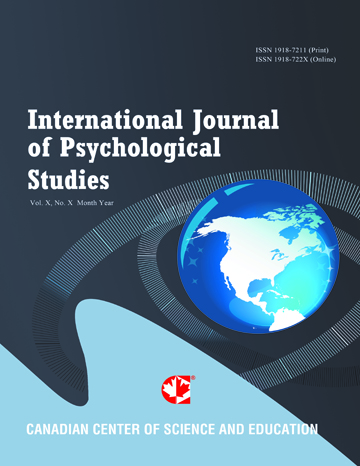The Caring-Uncaring Emotional (CUE) Inventory: A Pilot Study of a New Measure of Affective Psychopathy Traits
- Robert Semel
Abstract
An affective dimension of psychopathy, e.g., callousness, lack of empathy, unemotional responsiveness, is essential to the study and understanding of psychopathy. It may be advantageous to have available brief measures of the affective dimension that may be utilized with adults and/or youths. The current study aims to provide preliminary validation of a new, brief, self-report measure of the affective dimension of psychopathy that may be suitable in the study of both adults and adolescents. A pilot study of the Caring-Uncaring Emotional (CUE) Inventory was conducted with 155 men and women recruited from a community sample. The 23-item CUE Inventory was found to have high internal consistency reliability (α = .91) and was found to have high correlations with an expanded, 36-item version of the Levenson Self-Report Psychopathy Scale (LSRP; Levenson, Kiehl, & Fitzpatrick, 1995), especially with the expanded LSRP Callous subscale (r = .85), thus supporting preliminary concurrent validity. The CUE was only modestly associated with the Antisocial subscale of the expanded LSRP, further supporting it as a measure of affective rather than behavioral traits. The CUE accounted for an additional 57% of the variance in LSRP total scores after controlling for demographic variables. An Exploratory Factor Analysis suggested a three-factor solution, with the first factor accounting for approximately 37% of the variance in scores and with high to very high loadings on this factor, which appears, tentatively, as a good measure of callousness. In conclusion, the CUE may function as an operational representative of callousness in adults in a community sample. Further study is needed to better clarify the latent structure of this scale and to determine its associations with other similar measures of the affective dimension of psychopathy and with other external correlates. The potential application of this measure in youths remains to be studied.
- Full Text:
 PDF
PDF
- DOI:10.5539/ijps.v8n4p1
Journal Metrics
1. Citations (March 2025): 10975
3. i10-index (March 2025): 233
For details about the Journal Metrics, please visit the Google Scholar website.
Index
- AcademicKeys
- CNKI Scholar
- Elektronische Zeitschriftenbibliothek (EZB)
- Excellence in Research for Australia (ERA)
- GETIT@YALE (Yale University Library)
- Harvard Library E-Journals
- JournalSeek
- JournalTOCs
- LOCKSS
- MIAR
- Open Access Journals Search Engine(OAJSE)
- Open J-Gate
- PKP Open Archives Harvester
- SHERPA/RoMEO
- Standard Periodical Directory
- The Keepers Registry
- UCR Library
- Ulrich's
- Universe Digital Library
- WorldCat
Contact
- Barbara SunEditorial Assistant
- ijps@ccsenet.org
